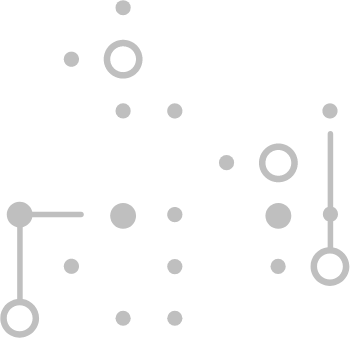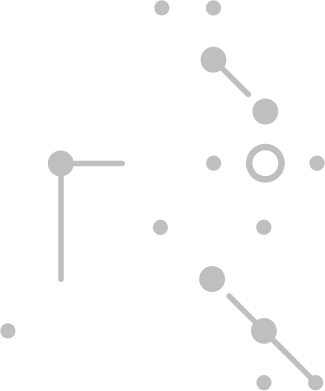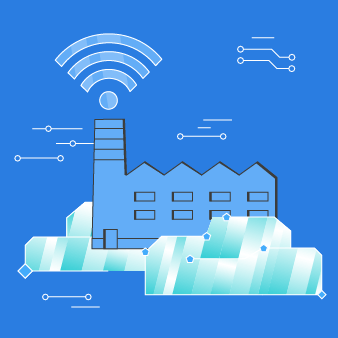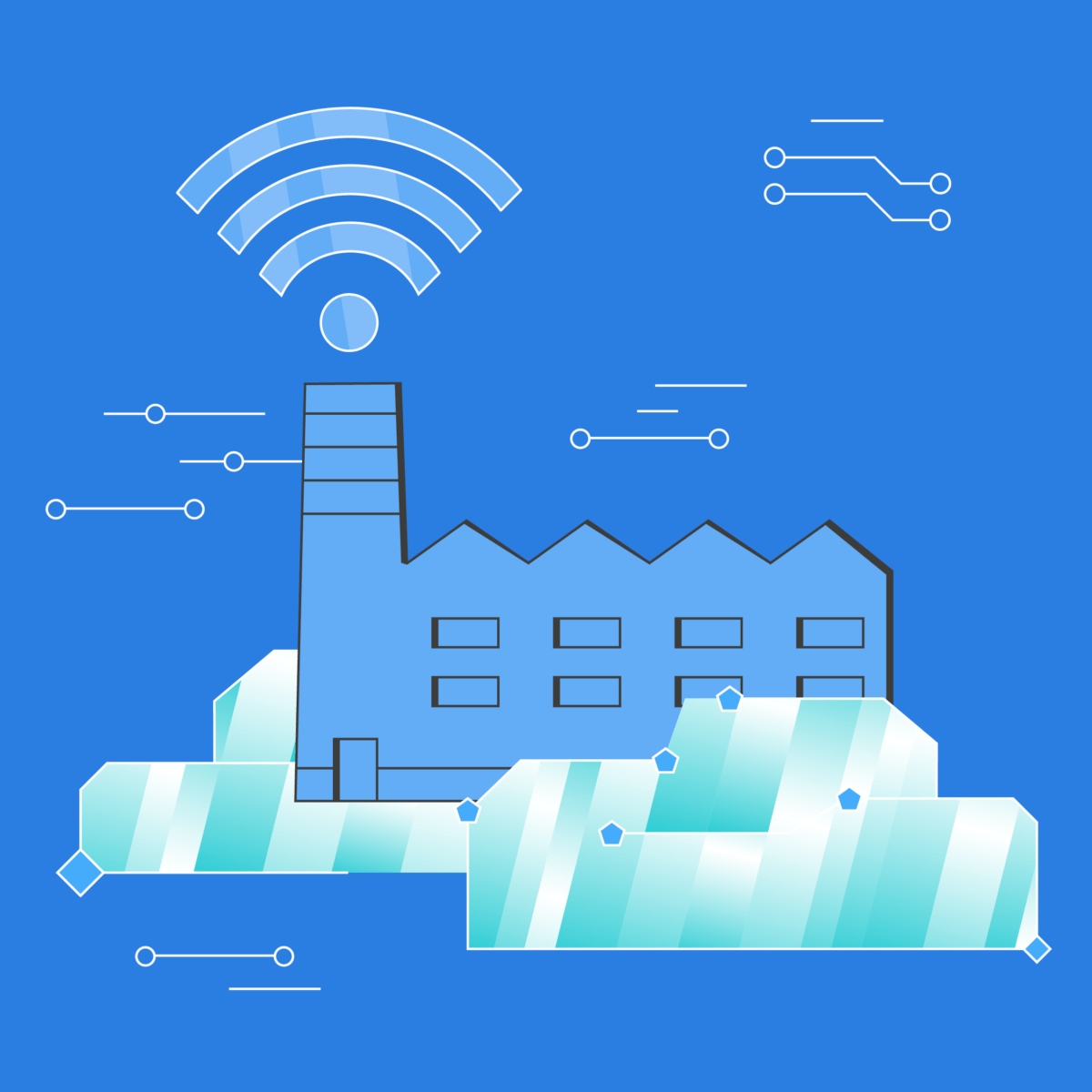



IoT in Manufacturing: How IT Infrastructure Shapes the Future of Production
2025-08-05 10:22:05When speaking of digital transformation, we often think of smart commerce or online business workflows. Traditional industries like manufacturing rarely come to mind first. Isn't this surprising, considering the fourth wave of the Industrial Revolution sweeping through factories and warehouses worldwide?
Research analysis predicts the global Industry 4.0 market will surpass $627 billion by 2030, growing at a CAGR of almost 20% from 2023. This growth stems from the widening adoption of sensors and devices, facilitating seamless data integration, while AI is driving predictive analytics and autonomous operations.
Quite understandably, Machine Learning has been on everyone's lips since the launch of ChatGPT. However, the Internet of Things (IoT) may be even more consequential when it comes to the production industry, yet we don't give it as much space.
That's why today, I want to shed light on IoT in manufacturing: how it works, its advantages, and its relation to cloud computing. Instead of dry discussions of cloud services enabling IoT innovation, I discuss some inspiring case studies from the users of AWS, Azure, and GCP. Read on!
What is IoT?
The Internet of Things (IoT) refers to physical objects with embedded sensors, software, and network connectivity, which allow them to collect and share data.
IoT devices range from ordinary household objects to wearables like smartwatches to sophisticated industrial machinery or systems.
Thanks to IoT, these devices can communicate with each other to exchange data and perform different tasks autonomously. According to Statista, there were over 15.8 billion IoT-connected devices in 2023; this year, this number will exceed 17 billion.
Potential applications of the Internet of Things are vast, and its impact is visible across many sectors. That’s why when speaking of IoT in manufacturing, it makes sense to refer to its specific subset – Industrial IoT (IIoT).
Zooming in on Industrial IoT
IIoT embraces the use of IoT in industrial settings, especially for instrumentation and control of sensors and devices. It lets companies monitor and manage assets remotely and continuously use data to enhance operations and safety.
One of the most popular IIoT applications in manufacturing is real-time production-line monitoring and optimisation. Sensors on equipment provide continuous data on production workflows, while companies can analyse this data to spot bottlenecks and areas for improvement.
Another popular application of IoT in manufacturing is predictive maintenance. IIoT devices allow manufacturers to monitor their equipment condition consistently to create a baseline.
This starting point and corresponding data from machinery help companies predict issues before they occur. As a result, they can schedule maintenance before failure happens, reducing downtime and ensuring production continuity.
Finally, IIoT is also extremely useful in production quality assurance. Connected devices can monitor manufacturing processes in real-time, identifying anomalies and irregularities and providing insights for corrective action before irreversible defects occur.
As a result, manufacturers can reduce waste and ensure high-quality production outcomes.
IoT in manufacturing: even more advantages
A network of smart, connected production devices and sensors gives manufacturers a competitive advantage and even more tangible benefits:
Optimised production efficiency and cost
Thanks to IoT, manufacturers can increasingly automate their production processes, which boosts operating efficiency and speed while reducing costs.
Robotic and automated machinery can work more accurately and provide continuous information on production conditions and the environment.
Thanks to such data, manufacturers can optimise the operational performance of individual pieces of equipment, entire fleets, and production lines. Both automation and data-driven decisions streamline production processes and make them more cost-efficient in the long term.
Shorter Time-to-Market
More efficient operations and increased flexibility let manufacturers shorten the production cycle and bring new products to the market faster than ever.
IoT tools enable faster decision-making in response to market changes and emerging trends – and today’s customers increasingly expect quick turnaround times.
This is evident in the case of Shein, a Chinese fast-fashion powerhouse that managed to leapfrog Goliath competitors like H&M within a few years. Thanks to big data, AI, and IoT, the apparel producer drastically shortened lead times while significantly increasing production volume.
Fewer errors
The human factor is the most significant risk regarding the security and quality of production lines. By automating manual processes, manufacturers can reduce the odds.
.
Although more devices means more targets for attack and more work for administrators having to protect them, IoT can promote advanced security practices. Manufacturers taking care to implement such policies from day one can significantly reduce the risk of cyberattacks and data breaches.
AI and Machine Learning-enabled programs and machinery can do much of the required work themselves, eliminating the potential for someone to make a simple mistake and put the manufacturer’s data at risk.
Improved production-line safety
IIoT boosts operations and workplace safety. When all the sensors work together to monitor the workplace, they also improve employee safety on the floor, production line, and distribution.
Should an accident occur, the production team gets an immediate notification, while operations cease until its resolution. Incident logs can generate valuable data that helps to prevent similar occurrences in the future.
The use of employee wearables can also drive safety up, as it allows production leadership to monitor work environment conditions and spot potential health hazards.
Digital twins
Digital twin refers to a virtual duplicate of physical objects made possible by IoT, cloud computing, and AI.
Such digital replicas help engineers and managers simulate processes, run tests, identify problems, and achieve required outcomes without compromising or damaging physical assets.
Digital twins also enable you to view production lines from a broader perspective. Through digital recreations, you can zoom in on a representation of a single machine or step back for a more comprehensive view of the entire process and spot any bottlenecks.
How cloud computing powers IoT in manufacturing
Although the idea of IoT isn’t new, its accelerated development and implementation in manufacturing couldn’t happen without cloud computing.
IoT sensor devices generate large volumes of data, while cloud computing provides the structure and tools to store, process, and analyse these swathes of information. The cloud is the backbone for Industrial IoT, enabling seamless connectivity and data management.
Additionally, the cloud provides the computational power necessary for advanced analytics and ML algorithms to extract valuable insights from IoT data.
Solutions for IoT in manufacturing are now part of the offer of all the major cloud providers, from AWS to Google Cloud and Azure. But instead of describing their services in theory, let’s discuss some of the inspiring implementation stories from their users.
AWS for IoT in manufacturing
Here’s how different cloud solutions from Amazon Web Services help manufacturers solve real challenges.
Scania: the challenge of IT system’s scalability
Scania is a Volkswagen Group representative in the Swedish market.
When implementing IoT in its trucks, the company faced the problem of quickly growing volumes of information sent by its vehicles to the IT systems. Scania’s on-prem infrastructure couldn’t scale up at the required pace.
The company solved this problem by working with AWS and gradually migrating the IoT system to the cloud. This decision helped Scania to maintain continuity and high-quality services.
The ability to automatically scale, combined with serverless services like Lambda, enabled the building of a system that efficiently handled the ever-growing number of trucks sending information to its IoT service.
Traeger Grills: migrating manufacturing IoT to the AWS cloud
Barbecue equipment producer Traeger Grills quickly embraced the potential of IoT in its manufacturing process. One of the resulting products was a line of grills enabling users to control the smoking process with a special app.
At some point, Traeger Grills faced a severe problem as the platform provider powering the company’s IoT solutions decided to sunset the solution. This decision posed a risk that Traeger Grills’ customers could no longer use the app to control their grills.
Working with a certified AWS partner, Traeger Grills developed a new IoT platform and launched it on the Amazon cloud within three months. This short launch timeline ensured no downtime for the company’s customers, whose grill control applications continued working as usual.
Traeger Grill’s new IoT platform benefited from the following AWS services:
1. AWS IoT Core provided the foundation enabling the grill to interact with the user’s application.
2. AWS IoT Device Management became the new IoT platform’s foundation for managing and monitoring a fleet of IoT devices.
3. Amazon Alexa Voice Service Integration enabled voice control of Traeger Grills products.
4. AWS S3 and AWS Lambda enabled creating a data lake within the new IoT platform.
Remedy Healthcare: IoT for physiotherapy
As part of Australian Unity, Remedy Healthcare offers home-based rehabilitation services after medical procedures.
One of the company’s goals was to increase the number of patients who regularly do their assigned exercises to improve post-surgical recovery. Over 50% of Remedy Healthcare patients only exercised once a physiotherapist came to see them, but such visits could only occur once a week.
This frequency of visits meant that physiotherapists couldn’t accurately monitor their patients’ improvement. To solve this problem, Australian Unity partnered with AWS to build the ‘Internet of Knees’ (IoK), a device that allows physiotherapists to monitor patients remotely and verify improvements in their knee joint mobility.
The AWS IoT Core service was the backbone of IoK, connecting it to an app in the AWS cloud to collect patient and rehabilitation data in real-time. Amazon Data Firehose then loaded this data into data lakes and stores. Thanks to Amazon Relational Database Service, the company could create a highly available and scalable cloud database, enabling physiotherapists to access patient information quickly.
With AWS services eliminating the need to manage physical infrastructure and software, Remedy Health could experiment and entirely focus on solving its business challenge.
Panek Car Sharing: IoT for smart car rental on AWS
Panek Car Sharing is a Polish company that rents cars by kilometres thanks to a special application. As such an offering was still a niche in Poland, the company built its infrastructure on AWS to maximise the speed of its app launch.
The system consists of two key components: cars equipped with IoT devices and a cloud-based application. The vehicles send data to the cloud thanks to their built-in modems and the AWS IoT Core service.
From there, the solution sends data to an app running on Amazon ECS. Containers running within this service power all the logic of the car rental app using OpenSearch, RDS, and Cognito.
Additionally, the app takes advantage of the AWS cloud’s load balancing and high availability capabilities, so it can always serve customers, regardless of demand.
Microsoft Azure for IoT in manufacturing
Stadtwerke München: Custom IoT for municipal asset management.
Stadtwerke München (SWM) manages the city of Munich’s municipal assets. The company decided to streamline operations by implementing an intelligent infrastructure for collecting information in real-time and a platform for analysing this data.
The INSIGHT platform is the result of the process, and its main functionalities use IoT, big data, and the Azure cloud’s AI capabilities.
One of INSIGHT’s key solutions is equipping the city’s electronic buses with IoT devices that continuously send data to the system, which then analyses it using AI. Its models enable, among other things, analysing each vehicle’s energy consumption to determine the needs of specific buses for up to two weeks ahead.
fischerwerke GmbH & Co. KG: IoT & Azure for construction monitoring
Owned by fischerwerke GmbH & Co. KG, German startup Connected Products used Azure to create an IoT solution for monitoring the forces impacting bolts in building structures.
The solution addresses the complex problem of determining the forces impacting specific bolts after installation, which is not apparent during planning phases. Monitoring a given structure’s condition makes it possible to detect structural problems very early.
The IoT devices used for bolt monitoring are connected directly to the Azure cloud and send data to it through a special gateway. As soon as the data enters the cloud, its processing begins. Right at the beginning, the Azure Event Hub decides if the data can go to a data lake and if the customer needs to be notified of any alarming results.
In addition to real-time monitoring, the solution uses the collected data to predict potential construction issues. The system also significantly reduces maintenance work, showing the exact location of problems like bolts needing tightening.
Grupo Bimbo: Optimising baked goods production with IoT and Azure
Grupo Bimbo is a Mexican food giant that decided to use IoT to collect information and optimise its baked goods production process.
Various machines in Grupo Bimbo’s factories received IoT sensors to collect real-time data. Once the data is extracted from the sensors, it goes to the Azure cloud, where it is analysed with business intelligence tools like PowerBI. As a result, Grupo Bimbo managed to streamline its food production process significantly.
Google Cloud Platform for IoT in manufacturing
Cubo AI: manufacturing devices thanks to IoT services from GCP
Cubo AI produces devices that make life easier for parents worldwide. Its flagship product, Cubo AI Plus, is an AI-enabled electronic nanny that reports on a baby’s status in real-time to parents.
The device is integrated with the Google Cloud platform’s IoT Core service, through which devices send their statuses to the cloud. This information is then analysed, and this information helps to identify and repair any problems in the device.
A crucial part of the product is its mobile app, which lets parents connect to the electronic nanny. Running on K8s clusters, the app uses an AI model powered by GPUs to recognise, for example, when the child’s mouth and nose get covered. It takes advantage of GCP’s load-balancing capabilities and Google’s Firebase.
Semios: IoT and GCP in agri-food production
Semios works in the field of high-value crops such as pistachios, apples, and almonds. The company aimed to use GCP’s IoT capabilities to build a platform allowing farmers to optimise factors such as water and pesticide use.
Semios built its platform using a hybrid cloud model that combines an on-prem setup with public cloud services. Special sensors Semios placed in the fields send data to the internal infrastructure, which then goes to the GCP cloud, where it gets analysed with BigQuery and the Cloud Machine Learning Engine.
Combining on-prem infrastructure with the public cloud stems from the latter’s almost unlimited scalability. This step prepares the company for the expected gigantic increase in information from the sensors it deployed in its customers’ crop fields.
It’s time to unlock the value of IoT in manufacturing
As the fourth industrial revolution is gaining momentum, traditional industries are undergoing a significant transformation.
Integrating IoT in manufacturing is reshaping production processes – this change is already underway. Sensors and devices enable real-time monitoring, predictive maintenance, and enhanced quality control, which in turn foster optimised production efficiency, shorter TTM, and improved safety.
All these benefits wouldn’t be possible without cloud computing, which serves as the backbone of IoT in manufacturing and other sectors. As the case studies above prove, combined with the right cloud services, IoT unlocks innovation even in the most conservative industries.
If you’re interested in how the Internet of Things and cloud computing can transform your production business, now is the right moment to act. Don’t wait until your competitors get ahead of you – glide past them first.
Drop us a line, and let’s talk about how you can use IoT in manufacturing to optimise processes, foster innovation, and bring products faster.

